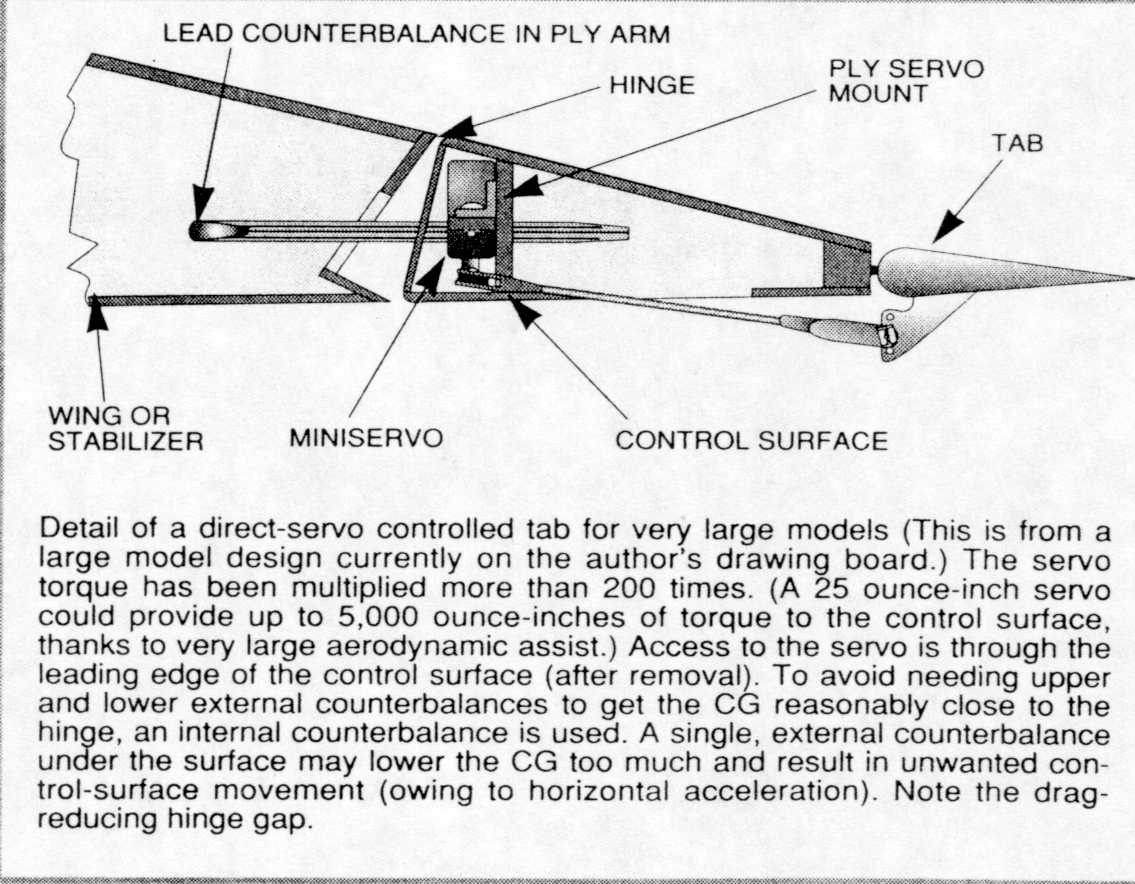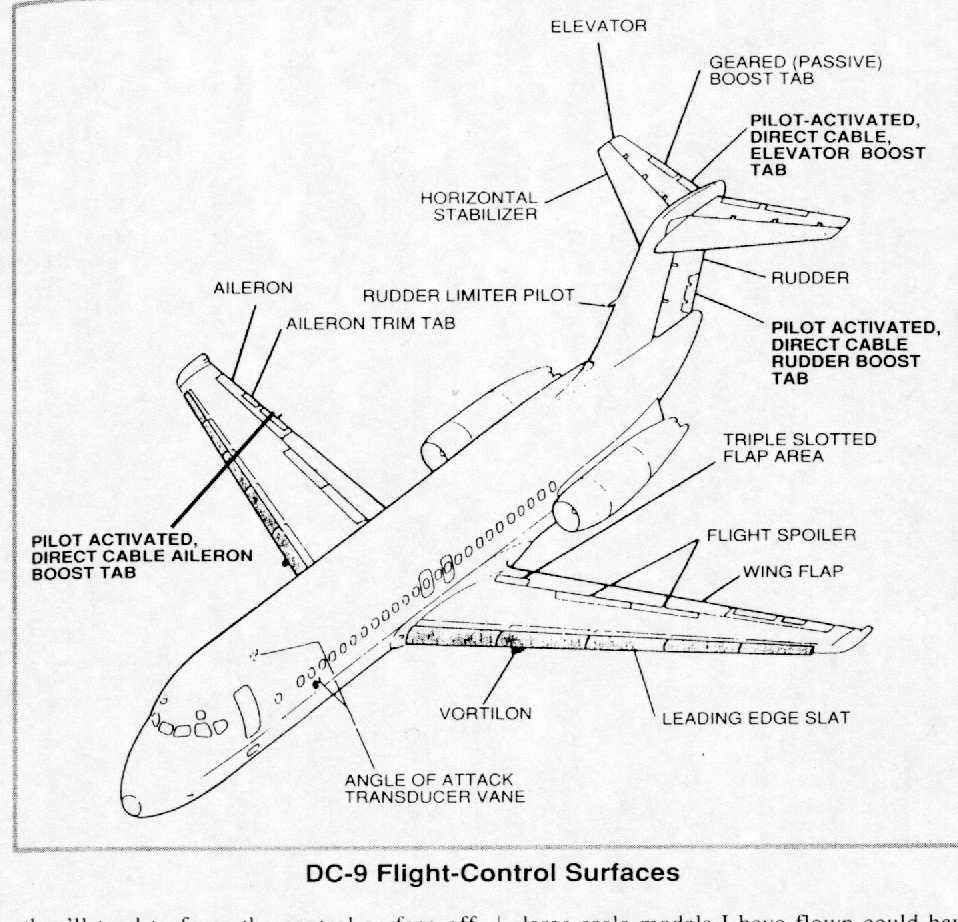
Actuating Linkage For
Direct Boost Tab
The actuating linkage for a free-floating control surface with a direct, servo-operated, aerodynamic boost tab could be a bit tricky. The simplest solution may be to mount a miniservo in the control surface itsel, the way homebuilders do for electric trim. The servo should be mounted as close to the hinge line as possible to minimize the additional mass unbalancing that will result from the weight of the servo. Run the servo lead across the hinge line, taking great care to get a gentle flex pattern in the lead to minimize fatigues. A mass counterbalance may not be absolutely essential, but it will prevent excessive drooping of the control surface, and it will certainly help prevent flutter.
Partial-span boost tabs on tapered control surfaces should be located near the maximum chord for best results.
Trimming With
Boost Tabs
And
Trim Tabs
Initially trimming a new model may take a little longer with boost tabs, because they also act as trim tabs and must be carefully adjusted to the optimum center position. If they aren't, they'll tend to force the control surface off center as air speed increases, putting the model out of trim. Unless the model has some unintentional misalignment or warp, the boost tab should be exactly centered in the control surface in the neutral position. Usually, only a very minor adjustment is needed to get the trim zeroed in.
Sometimes, a model with conventional control surfaces can't be satisfactorily trimmed owing to stabilizer incidence error or a wing warp. The model can be trimmed at full throttle and out of trim at part throttle, and vice versa. For example, consider a model with a wing warp. The model is trimmed at part throttle by applying aileron trim against the warp. Because the aileron and its control linkage are flexible to some degree, as the air speed is increased, the aerodynamic load trying to center the aileron increases greatly. The aileron is forced slightly off its correct position, and the model is out of trim.
The only cure for a model that doesn't have boost tabs or trim tabs is fixing the warp. This can be difficult with fully sheeted wings, but a boost tab can come to the rescue. Adjusting the boost tab slightly off center will make it act like a trim tab; it will keep the control surface at the same angle,
regardless of air speed.

Trim tabs can be as simple as a small piece of soft sheet aluminum projecting from the trailing edge of the control surface (similar to those seen on some older light aircraft).
Trim Tabs and Servo Load
Another nice feature of trim tabs is the elimination of nearly all servo load except during maneuvers: this reduces the current drain on the airborne battery. This is particularly important for the hard-working servos in large models. With aerodynamic boost tabs, of course, you don't need trim tabs. The same tab willingly does both jobs - trimming and servo assist. I seldom use anything much bigger than an 800mAh pack in my biggies, unless they have a lot of extra servos, and I get tired long before the battery pack does. The ball-bearing, coreless-motor, high-power, pattern model servos are much lighter than big, 1/4 scale servos. With the help of aerodynamic servo boost tabs, they do the job very well.
One thing to watch out for on all control surfaces is chordwise warps. These are frequently encountered in sheeted-balsa control surfaces where the iron-on covering has shrunk more on one side than on the other. The resultanf warps produce unwanted camber. I always check such control surfaces with a straightedge. If the camber is off, a little heat and force usually do the job.
Camber on a control surface will act just like a deflected trim tab, and it tends to force the surface away from the desired position. A barely noticeable camber can make a model impossible to trim well.
Keep Boost Tabs
and
Linkage Light
The weight of boost tabs and their actuating linkage should be kept as low as possible. Excess weight on the trailing edge of a control surface can invite flutter.